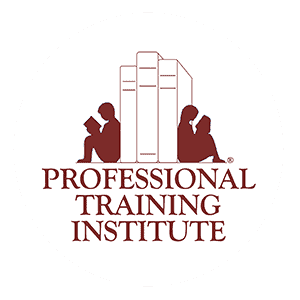
There has been much speculation and discussion about the idea that people with dyslexia seem to have particular strengths in areas of the brain responsible for perceptual reasoning or visual spatial tasks. Visual spatial tasks or visuospatial processing refers to strengths in tasks that are based on the ability to work with pictures not words.
Strengths in visual spatial tasks in the everyday world translates to the ability to understand maps, make origami, figure out puzzles, assemble things, read graphs of data, build complex structures with Legos, make model airplanes, excel at woodworking, draw, direct a school play, make creative videos, work with engines, plumbing, etc. These abilities may translate into career areas, such as engineering, architecture, art, music, mathematics, drafting, graphic design, computer programming, movie producing/directing, becoming an entrepreneur, or physics — astrophysics in particular. (1)
Before exploring these strengths, it’s important to first ask: what are the characteristics of dyslexia? Dyslexia is typically associated with difficulties in phonological processing, spelling, reading fluency, and decoding words. However, these challenges often coexist with notable talents in nonverbal and creative problem-solving areas.
What’s even more intriguing is that new scientific results are suggesting that we may be closer to explaining this idea with support from a body of empirical work. As Dr. Ken Pugh, Director of Research Laboratories, New Haven, CT puts it, “there seems to be a cognitive and neurobiological basis for the notion that some aspects of visuospatial processing appear to be an advantage in children with dyslexia.” (2)
Dr. Catya von Károlyi, an associate professor of psychology at the University of Wisconsin, Eau Claire, found some intriguing evidence that people with dyslexia process information from the visual periphery quicker than people who are not dyslexic. This refers to a person’s ability to process visual information outside of the center of the gaze where s/he is looking.
The work of Gadi Geiger and Jerome Lettvin at the Massachusetts Institute of Technology supports this idea. They briefly flashed a row of letters extending from the center of a person’s field of vision to its outside edges. Typical readers identified the letters in the middle row with more accuracy, however; people with dyslexia excelled when asked to identify letters in the row’s outer reaches. (2)
Geiger and Lettvin’s findings are fascinating. They assert that the brain separately processes information that streams from the central and peripheral (outer limits) of the visual field. They go on to discuss that these strengths trade off. A person adept at focusing on details located in the center of the visual field (which they believe is the key to reading) are likely to be less proficient at recognizing features and patterns in the broad regions of the periphery. Even more interesting, is their idea that the opposite is also true. People with dyslexia, who have strengths in processing visual information in the outer regions, can rapidly take in a scene as a whole or absorb what researchers call the visual gist. (2)
Dr. von Károlyi and others went on to support their ideas through the study of “impossible figures” like those sketched by the artist M.C. Escher. Escher sketches extremely complex drawings that are full of intricate details. They are called impossible figures because upon close examination, he draws scenes that cannot happen according to the laws of physics (water running upwards), etc. If a person focuses on just one element of these complicated drawings s/he will be led to believe that the picture represents a plausible physical arrangement when in fact; a larger (big picture) view at once reveals that Escher’s staircases really lead nowhere and the water in his fountains is flowing up rather than down. (View M.C. Escher’s Waterfall or Relativity.)
Dr. von Károlyi gave people simplified pictures that depicted things that are physically impossible. They were asked to determine if the scenario was possible or impossible. Interestingly enough, people with dyslexia identified pictures as impossible or possible in an average of 2.26 seconds, while viewers who were not dyslexic tended to take a third longer. “The compelling implication of this finding,” wrote Dr. Von Károlyi and her co-authors in the journal, Brain and Language, “is that dyslexia should not be characterized only by deficit, but also by talent.” (3)
Some people with dyslexia also demonstrate attributes such as an insatiable curiosity about areas of interest, a strong desire to experiment with novel ideas, and unshakable tenacity. These are characteristics that define the greatest thinkers and inventors of our time; many of whom were dyslexic.
Many people with dyslexia demonstrate a tremendous ability to think beyond conventional thought, which leads them to consider things in a prodigious, innovative manner. Couple that with the possibility of strengths in visual spatial tasks, and you have individuals with extremely unique creative abilities.
Take Pablo Picasso for example – Picasso, a true genius and dyslexic, is known as one of the greatest and most influential artists of the 20th century for his work that defied any previous traditional art form. In 1907, Picasso created a painting unlike he or anyone else had ever painted in which his subjects possessed sharp geometric features from multiple, simultaneous viewpoints, creating a collage-like effect that seemed to defy physics.
Picasso’s work led to the movement of the modern art-form called Cubism. Picasso’s work would seem to be an example of a person with exceptional visuospatial abilities. He created art from a visual-spatial perspective that was inconceivable before he conceived it. (4)
There is no question that Picasso was a genius as were many others with dyslexia, however; science is just now scratching the surface on the exact nature of the advantages of being dyslexic.
As Dr. Pugh explains, “Until we have a richer scientific foundation, caution is needed to know whether these strengths are a consequence of less reading experience and if they translate into a significant real world benefit.” However, the findings of Dr. Pugh’s study lend empirical support to the hypothesis that people with dyslexia could possibly have certain types of visuospatial processing strengths. (2)
This empirical data certainly adds more interest to a topic that is already thought provoking. The author of The Tipping Point, Malcolm Gladwell, devoted an entire chapter in his new book, David and Goliath (2013), to dyslexia as an example of a “desirable difficulty.” The idea being that society needs the people who rise up from difficulties with powerful compensatory capabilities. (6)
The discussion about dyslexia and its possible strengths will no doubt continue. It is an exciting time in our history where empirical data can be collected and shared through technology, such as fMRIs. Whether the remarkable strengths and contributions to our world from people with dyslexia has its origin in the neurology of the brain or is a result of one’s ability to overcome difficulties is still under discussion. Either way, the facts remain: many of our world’s greatest thinkers have been dyslexic. These are people who revolutionized our world in remarkably positive ways.
(1) Gifted and Dyslexic: Identifying and Instructing the Twice Exceptional Student
(2) The International Dyslexia Association, Dyslexia and Visuospatial Processing Strengths: New Research Sheds Light, Carolyn D. Cowen, https://dyslexiaida.org/
(3) New York Times Sunday Review, The Upside of Dyslexia, Annie Murphy Paul, 2/4/12, http://www.nytimes.com/2012/02/05/opinion/sunday/the-upside-of-dyslexia.html?_r=0
(4) Famous People with the Gift of Dyslexia, https://www.dyslexia.com/about-dyslexia/dyslexic-achievers/
(5) Pablo Diego José Francisco de Paula Juan Nepomuceno María de los Remedios Cipriano de la Santísima Trinidad Martyr Patricio Clito Ruíz y Picasso. (2014). The Biography.com website. Retrieved 11:17, Oct 19, 2014, from https://www.biography.com/artist/pablo-picasso
(6) Gladwell, M. (2013). David and Goliath: Underdogs, misfits, and the art of battling giants. New York: Little, Brown and Company.










Jaydin Skinner says: